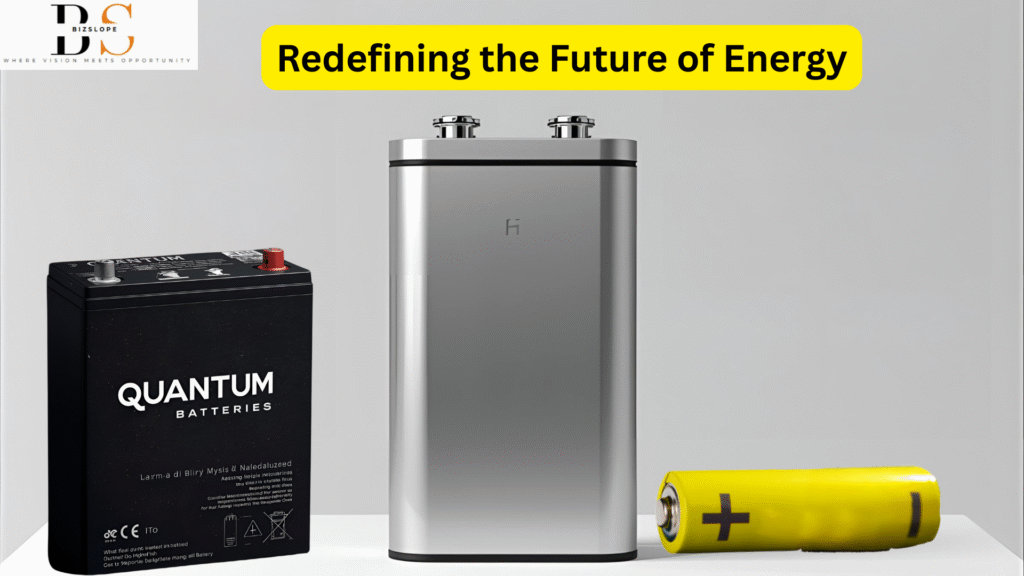In the 21st century, the race to build better batteries is as critical as the race for faster chips or more powerful rockets. From smartphones to electric vehicles (EVs), drones, satellites, and even renewable energy storage, our world runs on batteries. Yet, conventional lithium-ion technology is reaching its limits—slow charging, limited lifespans, and environmental concerns continue to hold industries back.
Enter Quantum Batteries, a groundbreaking innovation that promises near-instant charging, ultra-long lifespans of up to 50 years, and eco-friendly materials. Rooted in the mind-bending principles of quantum mechanics, this technology could redefine global energy infrastructure and unlock possibilities that seemed unimaginable only a decade ago.
The Science Behind Quantum Batteries
Quantum batteries operate on the concept of quantum entanglement—a phenomenon in which particles remain interconnected, allowing the state of one particle to instantly affect another, regardless of distance. In energy storage, this translates into parallel energy transfer rather than the step-by-step process of classical batteries.
While a lithium-ion battery charges each cell sequentially, a quantum battery can charge all cells at once, making charging times nearly instantaneous. Imagine charging your smartphone fully in seconds or replenishing an EV battery in the time it takes to buckle a seatbelt.
Why It Matters Globally
The adoption of quantum batteries could ripple across every sector:
- Transportation: EV adoption has been slowed by “range anxiety” and long charging times. Quantum batteries could eliminate this barrier, accelerating the transition to clean mobility worldwide.
- Aerospace & Drones: Satellites and drones often face limitations due to battery lifespans and charging needs. With 50-year lifespans, maintenance costs would drop dramatically.
- Consumer Electronics: The frustration of daily charging may soon vanish, as devices run longer and recharge in moments.
- Sustainability: Many quantum battery designs rely on eco-friendly or abundant materials, reducing the environmental toll of mining rare elements like cobalt and lithium.
The Market Outlook
The global battery industry, valued at over $120 billion in 2025, is projected to multiply in size as EVs, renewable energy, and electronics dominate global demand. Quantum batteries represent a potential disruptive force within this market.
Several companies and research labs are leading the charge:
- University of Adelaide (Australia) is pioneering experimental designs.
- Institute for Basic Science (South Korea) demonstrated early prototypes in 2023.
- Startups in Europe and the USA are racing to commercialize portable versions for consumer electronics and vehicles.
By the 2030s, analysts predict quantum batteries could command a multi-billion-dollar market share, replacing lithium-ion in critical industries.
Challenges Ahead
Despite the excitement, quantum batteries are still in the experimental stage. Commercial deployment faces significant hurdles:
- Scalability: Laboratory results must be replicated at industrial scale.
- Cost: Early production costs will be high, requiring government support and mass adoption to bring prices down.
- Infrastructure: EV charging networks, power grids, and electronic device standards must adapt to integrate this new technology.
- Safety & Stability: Any new energy technology must undergo rigorous safety testing to ensure long-term reliability.
Yet, the story of renewable energy and lithium-ion shows that once breakthrough technologies gain momentum, global adoption can be swift.
Ethical & Geopolitical Dimensions
The development of quantum batteries is not just a technological race—it is also a geopolitical contest. Countries leading in quantum research, such as China, the USA, and South Korea, see this as a strategic advantage akin to leadership in AI or 5G.
Control over this technology could influence energy independence, supply chain dominance, and climate commitments. For developing nations, affordable quantum batteries could provide leapfrog opportunities—enabling rural electrification and clean transport without relying on outdated fossil-fuel infrastructure.
The Future of Energy Storage
If realized, quantum batteries could revolutionize the very concept of energy. Imagine homes storing solar power in compact, maintenance-free units for decades. Picture fleets of buses or aircraft recharging in seconds, with zero downtime. Think of a world where battery replacement is virtually eliminated, cutting billions in e-waste.
This is not just an incremental improvement—it is a paradigm shift that could redefine how humanity powers its future.
Conclusion
Quantum batteries may still be in their infancy, but their potential is enormous. They offer a glimpse into a future where energy is abundant, accessible, and instantaneous—a future that aligns with global goals for sustainability, clean mobility, and technological progress.
The journey from lab to marketplace will not be easy, but the promise of a battery that charges in seconds and lasts for decades is too powerful to ignore. The nations and companies that succeed in harnessing this innovation will not only lead in technology but also hold the keys to the next global energy revolution.
In short, quantum batteries are more than a scientific curiosity—they are a potential cornerstone of humanity’s sustainable future.



